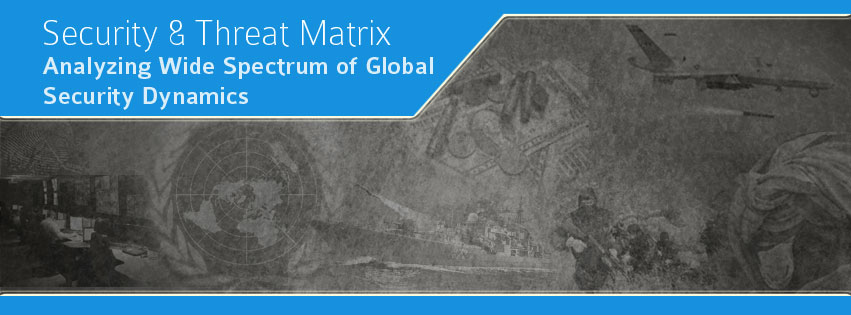By Shahzad Masood Roomi
This is the artificial island in South China Sea recently built by China as part of her land reclamation project. This Chinese project has sparked a heated debate in global strategic community. South China Sea is among the most volatile maritime strategic hot spots in Indian Ocean. This particular island is located in disputed territory of South China Sea and this is why there is so much debate going on about this Chinese military project. Recently, A US Navy P-8A flew over the island and captured some very detailed pictures proving that Chinese have put their construction work on the island in the next phase. A bitter exchange of words took place between P8-A crew and Chinese Navy while US Navy plane carried out reconnaissance mission revealing details of Chinese mysterious artificial military island. After the incident, Chinese official declared the US flight as an action threatening peace in South Asia Sea. But latest media reports suggest that this was not the last such events where Chinese disapproved the US spying on her island. Australian Navy is planning a 'freedom of navigation' mission to show its disapproval of Chinese project. Australia is a US ally in Asia-Pacific Pivot strategy announced by President Obama in 2010-11.
 |
| Detailed photograph taken by the US Navy P-8A shows construction work on Chinese artificial island. |
Latest, reports suggest that China has put weapons on the island. After these reports, there is a broad consensus among global security experts, that tensions over the South China Sea are set to escalate even further. As Chinese have shown their dissatisfaction over US spying its artificial island, the US defense secretary has defended the US spy plane flights over Chinese island. "There should be no mistake in this, the United State will fly, sail and operate wherever international law allows", said Ash Carter, US defense secretary.
Chinese military buildup has been among the most visible geopolitical trends in last 15 years. This military buildup is translation of growing Chinese economic strength. Latest reports suggest that IMF has approved Chinese Yuan as a next global reserve currency along with US Dollar, EU Euro and Japanese Yen. This economic and military rise of China is the most vivid proof of global shift of power from the west to east. But problem with such power shift is that they are seldom peaceful and considering the high stakes of both the US and China in South China Sea, many security experts around the world consider that a war between both these powers is inevitable.
Chinese military buildup has been among the most visible geopolitical trends in last 15 years. This military buildup is translation of growing Chinese economic strength. Latest reports suggest that IMF has approved Chinese Yuan as a next global reserve currency along with US Dollar, EU Euro and Japanese Yen. This economic and military rise of China is the most vivid proof of global shift of power from the west to east. But problem with such power shift is that they are seldom peaceful and considering the high stakes of both the US and China in South China Sea, many security experts around the world consider that a war between both these powers is inevitable.
Chinese Navy and Air Force are adopting aggressive policy as Beijing is looking to expand is capability to project power away from mainland China. Recently, Russia and China concluded naval exercises in Mediterranean Sea sending clear signal to NATO about the emergence of multi-polar world order.
There is no doubt that artificial island is a major step forward in Chinese strategy to project maritime power in South China Sea. Some experts have declared the island a non-sinkable Chinese aircraft carrier which is going to pose serious challenge to the US and allied maritime vessels in the region. But is Chinese strategy to build artificial islands in South China Sea going to yield the strategic results as Beijing has envisioned them?
Analysis:
Apart from that there is a question of building a naval island and coping with its vulnerabilities due to modern ballistic missile threats.
China is following the US footsteps
as far as its island maritime strategy is concerned. During and after the World
War II, the US established naval bases and stations on islands across the
world. The islands like Midway Atoll and Diego Garcia provide strategic footprint
to the US Navy in Pacific and Indian Ocean. Though these islands are invaluable assets for
the projection of maritime power and provide operational freedom for US Navy
away from its own sea shores as they extend the line of sight for the US Navy
due to radar stations and observational posts established on these islands. But
at the same time, these islands can very easily become the operational
nightmare due to their natural geographic vulnerability in open seas.
There is already a debate is going on within the US national
security council about rising precision strike capabilities of Chinese Navy and
threat it poses to the US bases in Indian Ocean and the Pacific. In 2014,
Carnes Lord and Andrew S Erickson, both professors at US Naval War College, penned
“Rebalancing U.S.
Forces: Basing and Forward Presence in the Asia-Pacific” which presented
a case study about vulnerabilities of US naval basing in the Pacific and Indian
Ocean.
“American seapower requires a
robust constellation of bases to support global power projection. Given the
rise of China and the emergence of the Asia-Pacific as the center of global
economic growth and strategic contention, nowhere is American basing access
more important than in this region. Yet manifold political and military
challenges, stemming not least of which from rapidly-improving Chinese
long-range precision strike capabilities, complicate the future of American
access and security here.”, says the writers.





No comments:
Post a Comment